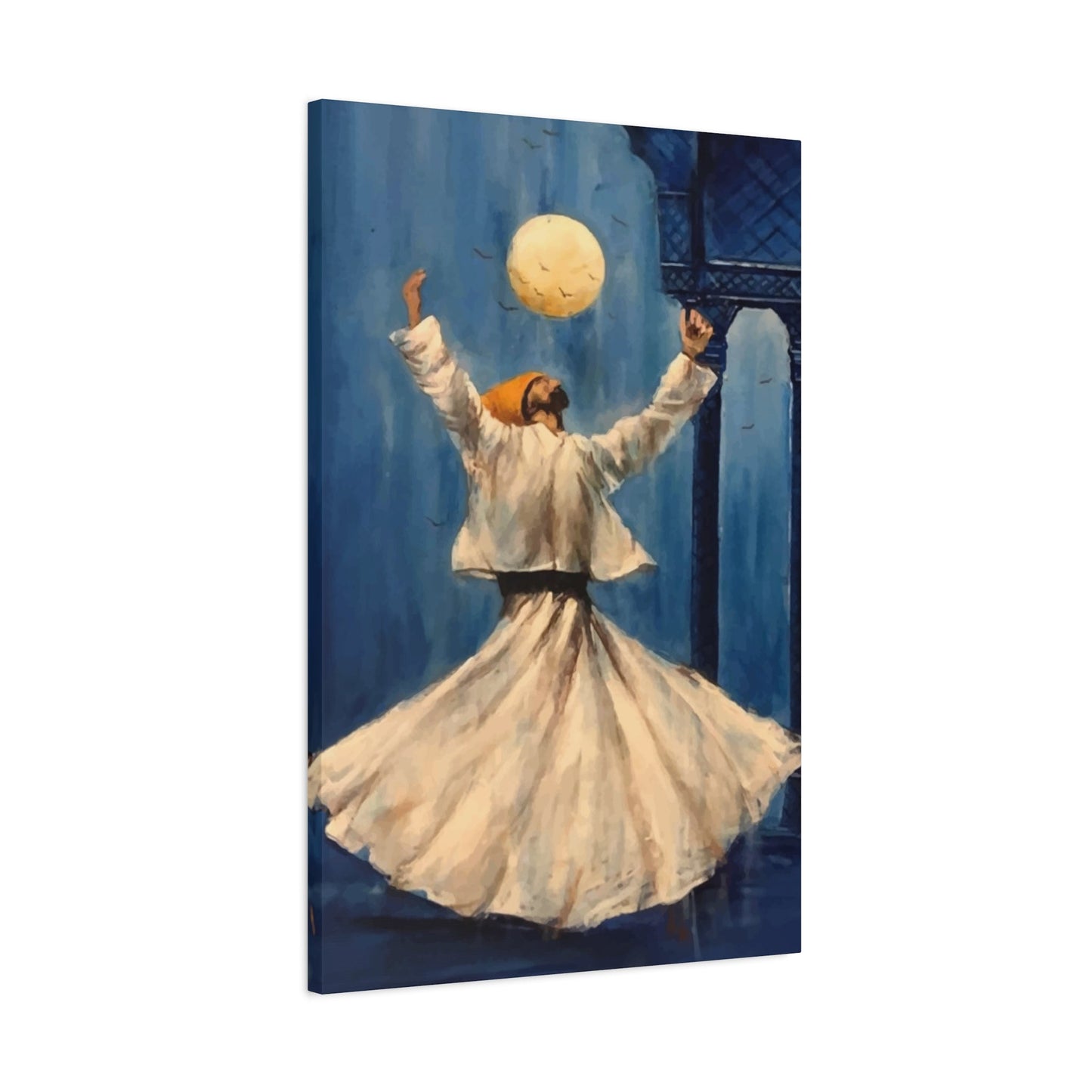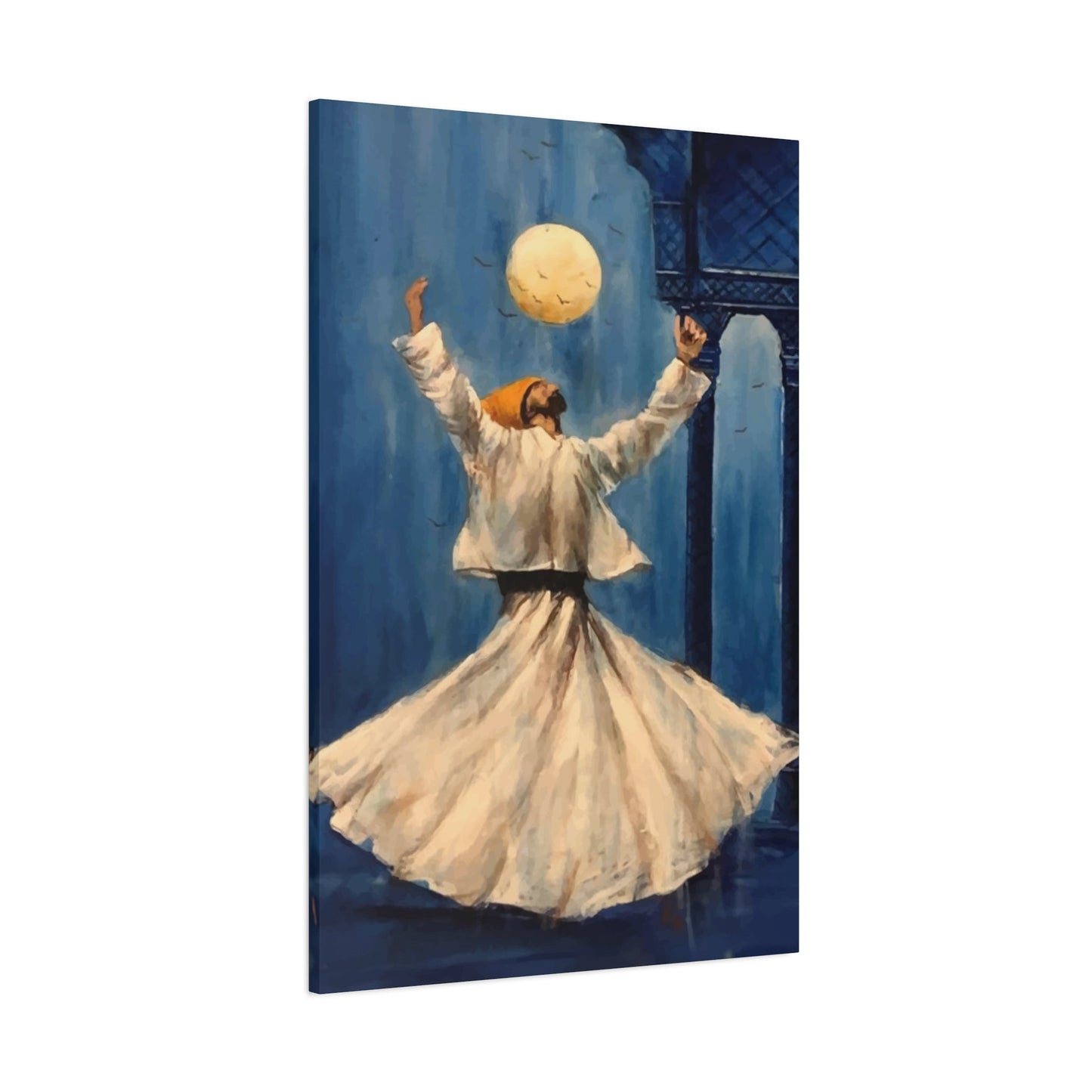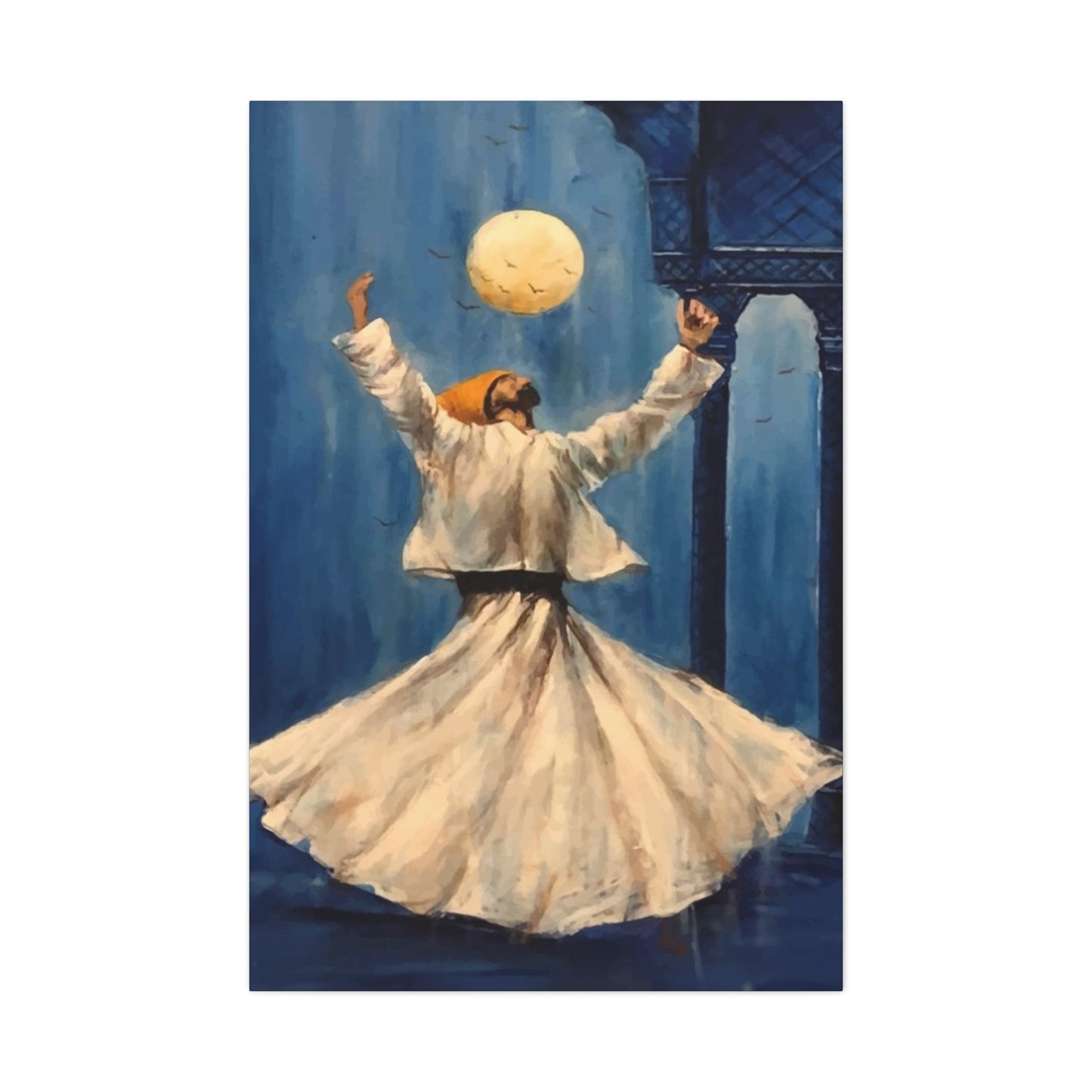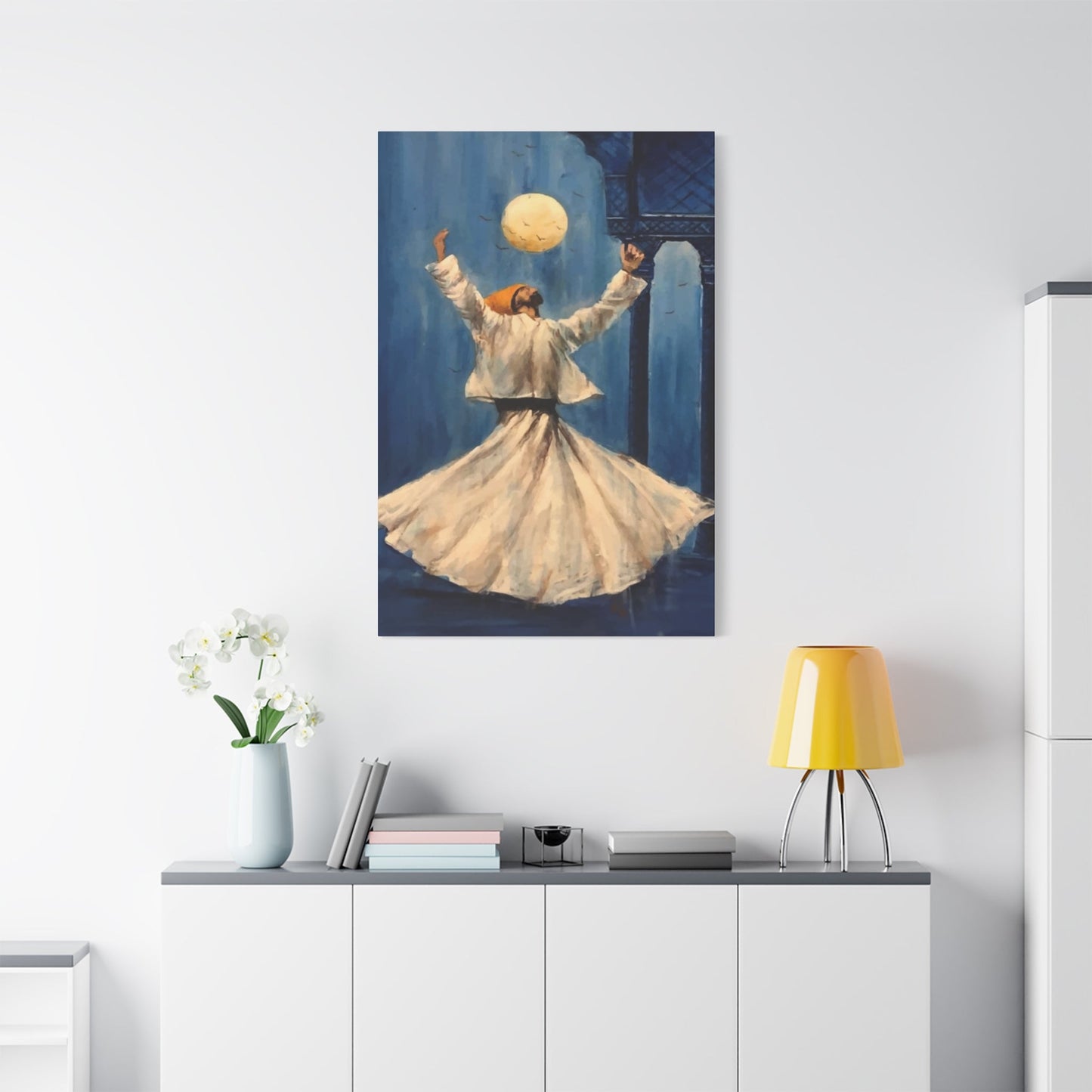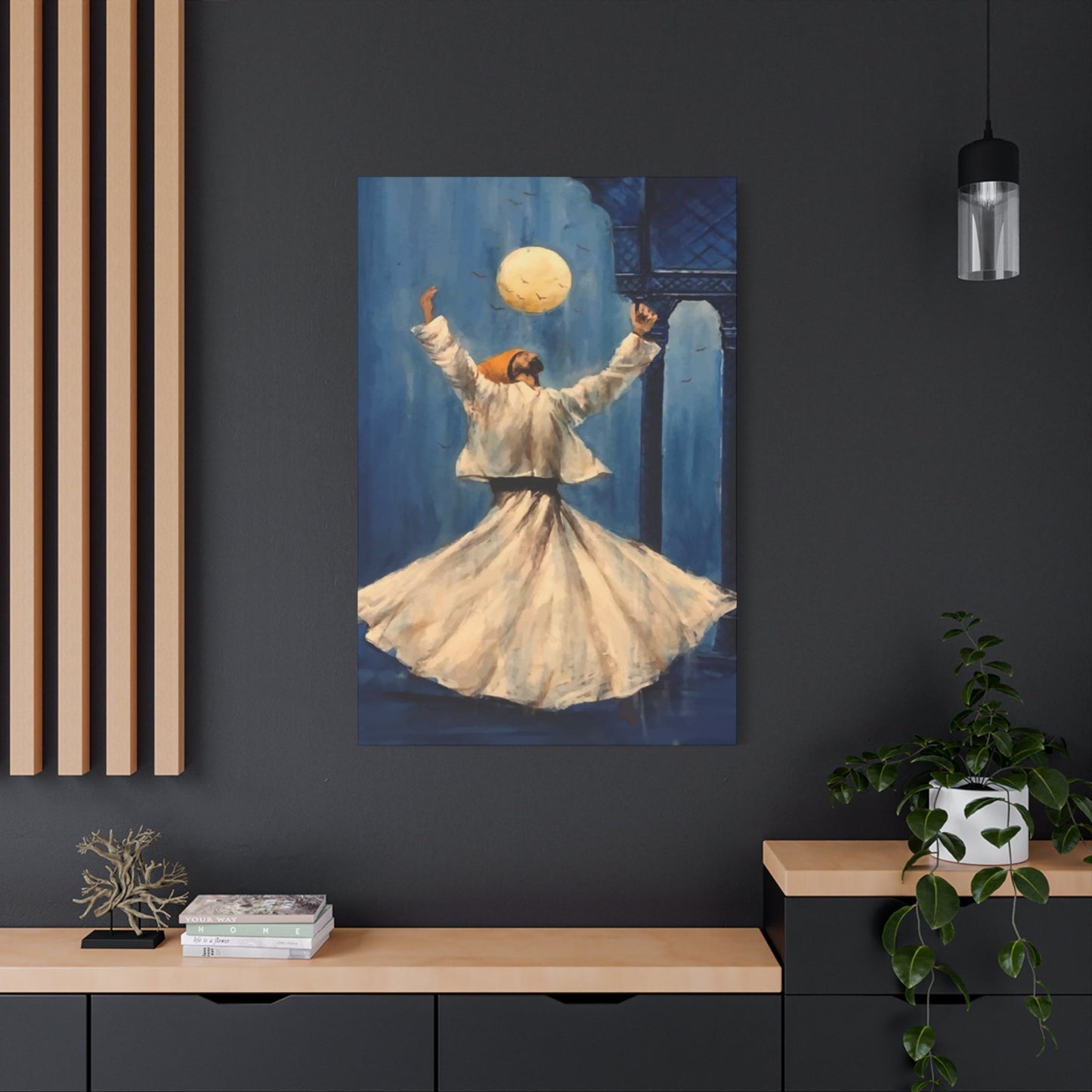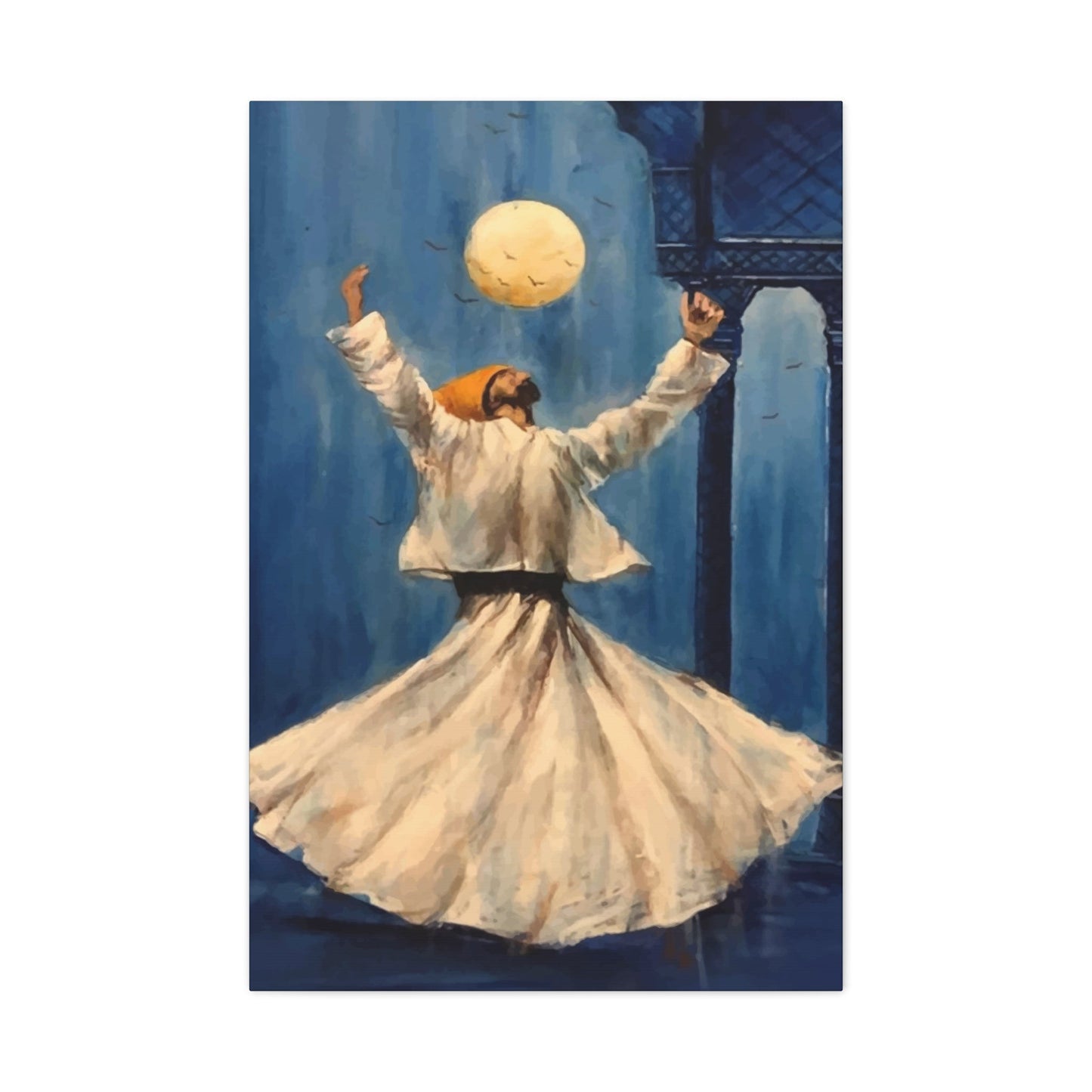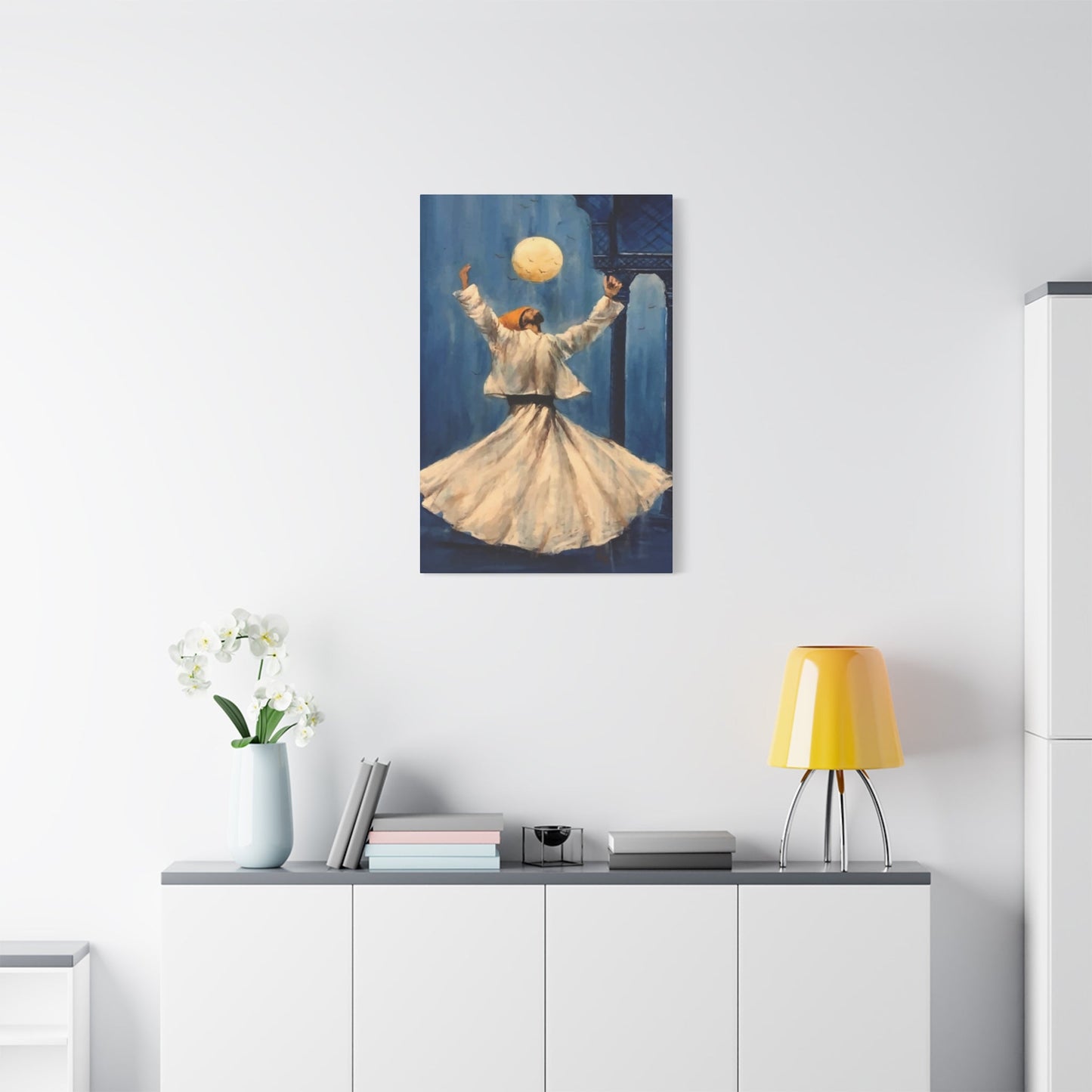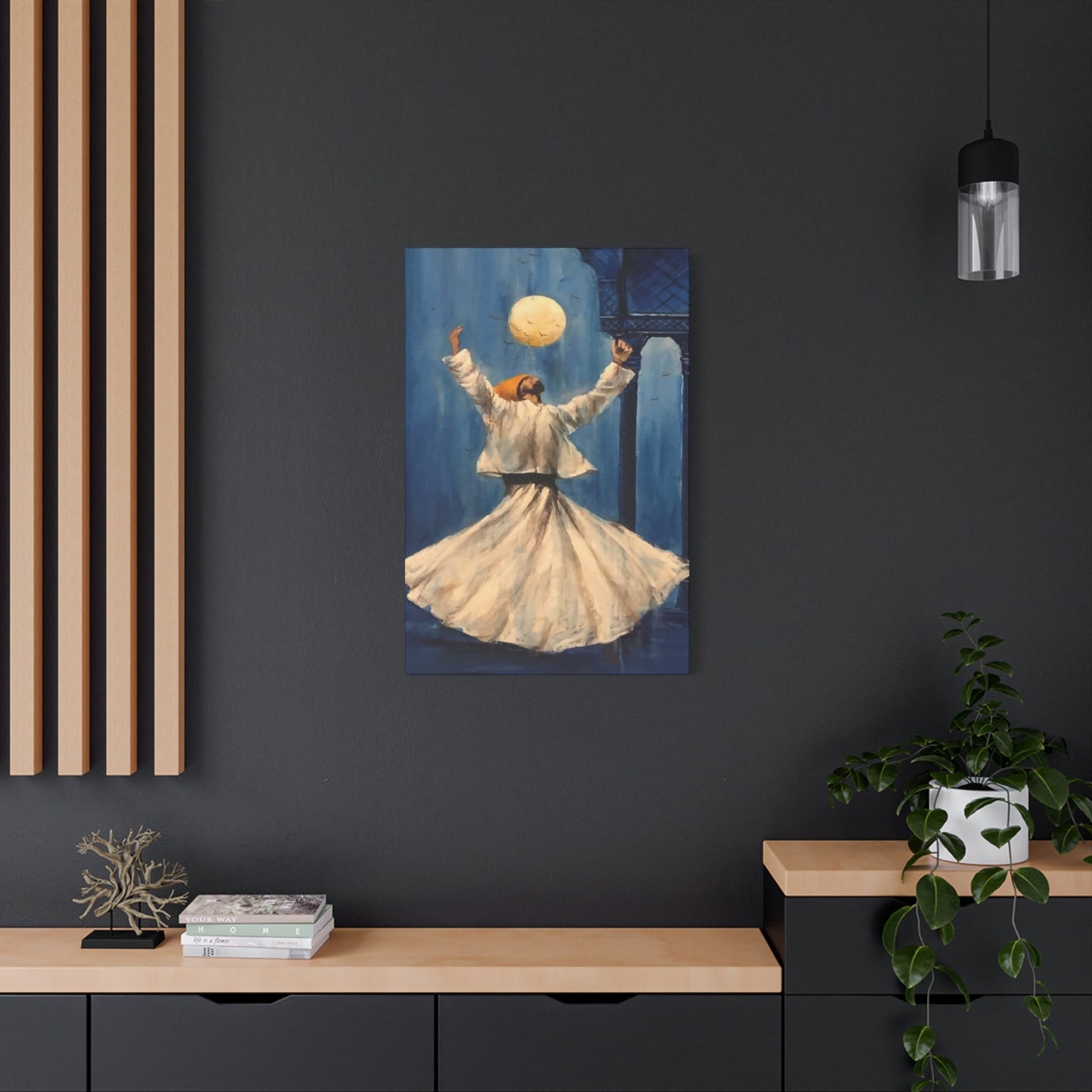Sacred Expression: Religious Wall Art for Spiritual Homes and Sanctuaries
Religious artwork has served as a bridge between the earthly and divine for millennia, offering believers and spiritual seekers alike a visual pathway to contemplation, worship, and connection with their faith. In contemporary times, religious wall art has evolved beyond traditional church settings, finding its way into homes, meditation rooms, and personal sanctuaries where individuals seek to create meaningful environments that reflect their spiritual beliefs and values.
The incorporation of sacred imagery into living environments represents more than mere decoration; it embodies a deliberate choice to surround oneself with visual reminders of faith, hope, and spiritual purpose. Whether through ancient symbols that have guided believers for centuries or contemporary interpretations that speak to modern spiritual sensibilities, religious wall art serves as both artistic expression and devotional tool.
This comprehensive exploration delves into the multifaceted world of religious wall art, examining its historical roots, contemporary applications, and practical considerations for those seeking to integrate sacred imagery into their personal environments. From understanding the profound symbolism embedded in religious iconography to navigating the practical aspects of selection, placement, and care, this guide provides insights for anyone drawn to the intersection of faith and artistic expression.
The journey through religious wall art encompasses various traditions, styles, and approaches, recognizing that spirituality manifests differently across cultures, denominations, and individual believers. Whether one seeks traditional representations that honor centuries-old artistic traditions or contemporary interpretations that speak to modern sensibilities, the world of religious wall art offers rich possibilities for personal and communal spiritual enhancement.
Popular Religious Symbols in Wall Art
Religious symbolism in artistic expression carries profound meaning that transcends cultural and temporal boundaries, speaking to universal human experiences of faith, hope, and spiritual yearning. The cross stands as perhaps the most recognizable symbol in Christian art, representing sacrifice, redemption, and eternal life. Its various forms, from simple wooden crosses to ornate Celtic designs adorned with intricate knotwork, each carry specific theological and cultural significance that resonates differently across Christian denominations and traditions.
The Star of David, with its interlocking triangles, appears frequently in Jewish religious art, symbolizing the connection between divine and earthly realms. This six-pointed star has evolved from its ancient origins to become a powerful identifier of Jewish faith and culture, often incorporated into contemporary artistic expressions that honor both tradition and modern aesthetic sensibilities.
Islamic calligraphy transforms sacred text into visual art, with verses from the Quran and beautiful renderings of Allah's names creating stunning focal points that combine spiritual devotion with artistic excellence. The flowing Arabic script, with its inherent beauty and spiritual significance, demonstrates how language itself can become a form of religious artistic expression, transcending mere communication to become meditation and worship.
Hindu and Buddhist symbols bring rich iconographic traditions to contemporary wall art, with the Om symbol, lotus flowers, and mandala designs offering pathways to contemplation and spiritual focus. These ancient symbols, rooted in thousands of years of spiritual practice and philosophical understanding, continue to inspire both traditional and contemporary artists who seek to express universal spiritual truths through visual means.
The dove, olive branch, and fish carry symbolic weight across multiple religious traditions, representing peace, hope, and faith respectively. These symbols often appear in artistic contexts that emphasize their universal spiritual significance rather than their specific denominational associations, making them particularly suitable for environments where diverse spiritual traditions converge.
Angels and religious figures from various traditions provide another rich source of symbolic content for religious wall art. From guardian angels offering protection and comfort to saints and spiritual teachers providing inspiration and guidance, these representations connect viewers with the human dimension of religious experience while pointing toward transcendent realities.
The tree of life appears across multiple religious and spiritual traditions, symbolizing growth, connection, and the sacred relationship between earth and heaven. This powerful symbol translates beautifully into artistic expression, offering opportunities for both traditional and contemporary interpretations that speak to universal themes of spiritual development and divine connection.
Using Religious Art to Inspire Peace
Religious artwork possesses a unique capacity to create environments conducive to inner peace and spiritual tranquility, transforming ordinary rooms into sanctuaries of calm and reflection. The careful selection and placement of sacred imagery can significantly influence the emotional and spiritual atmosphere of living areas, offering visual anchors for meditation, prayer, and contemplative practices that support mental and emotional well-being.
Peaceful religious imagery often focuses on scenes and symbols that evoke serenity, compassion, and divine love. Representations of Christ as the Good Shepherd, Buddha in meditation, or Hindu deities in poses of blessing and protection create visual focal points that naturally draw the mind toward peaceful contemplation and spiritual reflection. These images serve as constant reminders of divine care and protection, offering comfort during times of stress or uncertainty.
The color palette chosen for religious artwork significantly impacts its ability to inspire peace and tranquility. Soft blues reminiscent of heavenly realms, gentle greens that evoke paradise and renewal, and warm earth tones that ground the spirit all contribute to creating environments that support peaceful contemplation. Artists and collectors who prioritize peace-inducing qualities often gravitate toward these calming color schemes that complement rather than compete with the sacred subject matter.
Natural imagery combined with religious themes creates particularly powerful peace-inducing artwork. Scenes of Christ walking on water, Buddha meditating under the bodhi tree, or abstract representations of divine light filtering through natural settings connect spiritual themes with the inherent tranquility found in nature. These combinations speak to the deep human need to connect with both divine presence and natural beauty, creating artwork that satisfies multiple levels of spiritual and aesthetic appreciation.
The size and scale of religious artwork influence its capacity to create peaceful environments. Larger pieces that dominate wall areas can create immersive experiences that transport viewers into contemplative states, while smaller, more intimate pieces invite closer examination and personal reflection. The key lies in matching the scale of the artwork to both the physical dimensions of the room and the intended spiritual function of the environment.
Prayer and meditation rooms benefit particularly from religious artwork specifically chosen for its peaceful qualities. Images that support contemplative practices, such as depictions of religious figures in prayer or abstract representations of divine light and presence, help create environments where the mind naturally settles into states of peace and spiritual openness. The artwork becomes an integral part of the spiritual practice itself, supporting and enhancing the meditative experience.
Family environments require religious artwork that inspires peace while remaining appropriate for all ages and family activities. Gentle depictions of religious stories, symbols that convey protection and love, and imagery that celebrates the sacred dimension of family life help create homes where peace and spirituality are naturally integrated into daily experience. These artistic choices support the development of spiritual awareness in children while providing comfort and inspiration for adults navigating the challenges of contemporary family life.
Styles of Religious Canvas Prints
Canvas prints have revolutionized the accessibility and versatility of religious artwork, offering believers and art enthusiasts numerous options for incorporating sacred imagery into their personal environments. Traditional religious art styles faithfully reproduce classical paintings and iconographic representations that have inspired believers for centuries, bringing museum-quality reproductions of masterworks into homes and worship areas where original pieces would be impossible to obtain or display.
Renaissance-inspired canvas prints showcase the incredible technical skill and theological depth achieved by master artists like Michelangelo, Leonardo da Vinci, and Raphael. These reproductions allow contemporary viewers to experience the profound spiritual impact of these masterworks in intimate settings, bringing the grandeur and theological sophistication of Renaissance religious art into modern homes and worship areas. The rich colors, dramatic lighting, and emotional depth of Renaissance religious art continue to move viewers centuries after their creation.
Contemporary religious art styles offer fresh interpretations of sacred themes, often incorporating modern artistic techniques and aesthetic sensibilities that speak to current generations of believers. These canvas prints might feature abstract representations of religious concepts, stylized depictions of biblical scenes, or innovative approaches to traditional religious symbolism that bridge ancient faith with contemporary artistic expression.
Photographic religious art captures sacred locations, religious ceremonies, and natural phenomena that evoke spiritual wonder and contemplation. Canvas prints of holy sites like Jerusalem, Vatican City, or sacred natural locations provide viewers with visual connections to places of pilgrimage and spiritual significance. These photographic representations often carry profound emotional and spiritual impact, especially for those unable to travel to such sacred destinations.
Mixed media religious art combines traditional painting techniques with contemporary materials and approaches, creating unique artistic expressions that honor both historical traditions and modern creativity. Canvas prints of these works bring innovative religious art into homes and worship areas, demonstrating how faith continues to inspire new forms of artistic expression that speak to contemporary spiritual sensibilities.
Cultural fusion styles in religious canvas prints reflect the global nature of contemporary faith communities, combining artistic traditions from different cultures with universal religious themes. These works might incorporate African artistic styles with Christian themes, Asian aesthetic principles with Western religious imagery, or Islamic geometric patterns with universal spiritual symbols, creating artwork that celebrates both diversity and unity in religious expression.
Minimalist religious art styles focus on essential elements of sacred imagery, stripping away decorative elements to reveal the core spiritual significance of religious symbols and themes. Canvas prints in minimalist styles often feature simple crosses, single religious symbols, or abstract representations of divine presence that complement contemporary architectural and decorative styles while maintaining profound spiritual significance.
Vintage and retro religious art styles evoke nostalgia for earlier periods of religious artistic expression, often reproducing or reinterpreting artwork from specific historical periods or cultural movements. These canvas prints appeal to those who find spiritual connection through historical continuity and traditional artistic approaches, bringing the comfort and familiarity of established religious artistic traditions into contemporary settings.
Combining Tradition with Modern Religious Art
The integration of traditional religious artistic elements with contemporary aesthetic approaches creates dynamic artistic expressions that honor historical faith traditions while speaking to modern spiritual sensibilities. This synthesis requires careful attention to maintaining the theological and spiritual integrity of traditional religious imagery while allowing for creative interpretation and contemporary artistic innovation that resonates with current generations of believers and spiritual seekers.
Traditional iconographic elements serve as foundational components in modern religious art, providing established symbolic frameworks that carry centuries of theological development and spiritual significance. Contemporary artists working within religious traditions draw upon these established symbols while exploring new ways to present them that reflect modern aesthetic preferences and spiritual understandings. The challenge lies in innovation that enhances rather than diminishes the spiritual power of traditional religious imagery.
Color palettes in modern religious art often depart from traditional schemes while maintaining respect for the symbolic significance of religious colors. Contemporary artists might employ unexpected color combinations that create fresh visual impact while preserving the essential spiritual meaning embedded in religious imagery. This approach allows for artistic innovation that attracts modern viewers while maintaining connection to established religious traditions and their associated meanings.
Abstract interpretation of religious themes offers artists opportunities to explore spiritual concepts through non-representational means, creating artwork that speaks to universal spiritual experiences while remaining rooted in specific religious traditions. These abstract approaches often focus on emotional and spiritual qualities rather than literal representation, allowing viewers to engage with religious themes through personal interpretation and spiritual intuition rather than purely intellectual understanding.
Contemporary materials and techniques bring new dimensions to traditional religious subjects, with artists employing modern printing methods, digital enhancement, and innovative canvas treatments that create visual effects impossible with traditional artistic media. These technological advances allow for reproduction and distribution of religious art that maintains high quality while reaching broader audiences who seek to incorporate sacred imagery into their personal environments.
Architectural integration represents another avenue for combining traditional and modern approaches to religious art, with contemporary artists creating works specifically designed to complement modern architectural styles while maintaining appropriate reverence for religious subject matter. These works often consider lighting, proportion, and environmental factors that affect how religious artwork functions within contemporary architectural contexts.
Cultural dialogue in modern religious art acknowledges the global nature of contemporary religious communities, creating works that honor traditional religious imagery while incorporating artistic influences from diverse cultural backgrounds. This approach recognizes that modern religious expression often occurs in multicultural contexts where artistic traditions from different backgrounds naturally interact and influence each other.
Personal interpretation in modern religious art encourages individual engagement with traditional religious themes, creating works that invite personal reflection and spiritual exploration rather than prescribing specific theological interpretations. This approach honors both the authority of religious tradition and the importance of personal spiritual experience, creating artwork that functions as invitation to deeper faith engagement rather than mere illustration of established doctrine.
Framing Tips for Religious Wall Art
Proper framing significantly enhances the visual impact and spiritual presence of religious artwork while providing essential protection that ensures longevity and preservation of sacred imagery. The selection of appropriate framing materials, styles, and techniques requires careful consideration of both aesthetic and preservation factors, balancing the desire for beautiful presentation with practical requirements for protecting valuable religious artwork from environmental damage and deterioration.
Frame style selection should complement rather than compete with religious artwork, with traditional religious pieces often benefiting from classic frame styles that honor the historical period and artistic tradition represented in the artwork. Ornate frames with gold or silver leaf finishes provide appropriate grandeur for formal religious artwork, while simpler frame styles better complement contemporary religious art that emphasizes clean lines and minimal aesthetic approaches.
Material considerations for religious art framing extend beyond aesthetic preferences to include preservation requirements that protect artwork from environmental factors that could cause damage over time. Acid-free matting materials prevent chemical reactions that could discolor or deteriorate religious artwork, while UV-protective glass or acrylic glazing shields artwork from harmful light exposure that could fade colors and degrade materials used in the original artwork creation.
Conservation framing techniques become particularly important for valuable or historically significant religious artwork, requiring specialized materials and methods that provide maximum protection while maintaining appropriate visual presentation. Museum-quality framing materials and techniques ensure that precious religious artwork remains preserved for future generations while continuing to serve its spiritual and aesthetic functions in contemporary settings.
Color coordination between frames and religious artwork requires sensitive attention to the spiritual atmosphere intended for the display environment. Frame colors should enhance rather than distract from the religious imagery, with neutral tones often providing the most versatile and appropriate options for displaying diverse religious artwork. However, specific religious traditions may have color associations that influence frame selection, making cultural and theological awareness important considerations in framing decisions.
Sizing and proportion calculations ensure that frames appropriately complement the scale and visual weight of religious artwork without overwhelming or minimizing the spiritual impact of the imagery. Oversized frames can dominate religious artwork and detract from its spiritual presence, while undersized frames may fail to provide adequate visual support for significant religious imagery that deserves prominent presentation.
Lighting considerations during framing selection involve planning for appropriate illumination that enhances the visibility and impact of religious artwork without causing damage through excessive heat or UV exposure. Frame selection should accommodate lighting plans that highlight religious artwork effectively while providing protection from harmful environmental factors that could compromise the integrity of the artwork over time.
Installation planning during the framing process ensures that completed religious artwork can be safely and securely mounted in intended display locations. Frame hardware selection and wall preparation requirements should be considered during framing to avoid situations where completed artwork cannot be properly installed or displayed as intended.
Religious Art for Meditation and Prayer Locations
Dedicated meditation and prayer locations benefit immensely from carefully selected religious artwork that supports contemplative practices and enhances the spiritual atmosphere of these sacred personal environments. The visual elements present in meditation and prayer areas significantly influence the quality and depth of spiritual experiences, making thoughtful artwork selection essential for creating effective contemplative environments that facilitate meaningful spiritual practice and personal religious development.
Contemplative religious imagery specifically chosen for meditation and prayer locations should promote inner stillness and spiritual focus rather than intellectual analysis or emotional excitement. Images of religious figures in states of prayer or meditation, abstract representations of divine light or presence, and symbolic imagery that invites quiet reflection all contribute to creating visual environments that naturally support contemplative spiritual practices and encourage deeper levels of meditation and prayer.
Scale and placement of religious artwork in meditation and prayer areas require careful consideration of how visual elements will interact with contemplative practices. Artwork positioned at eye level for seated meditation provides natural focal points that can anchor attention and support concentration, while imagery placed slightly above eye level may encourage the upward spiritual aspiration often associated with prayer and worship practices.
Color psychology plays a crucial role in selecting religious artwork for meditation and prayer locations, with cooler tones generally promoting calm and introspection while warmer colors might stimulate emotional engagement and devotional fervor. The specific spiritual goals and personal preferences of individuals using these contemplative areas should guide color selections that best support their particular approaches to meditation and prayer practice.
Lighting integration with religious artwork in prayer and meditation areas affects both the visibility of the imagery and the overall atmosphere of these sacred environments. Soft, indirect lighting that gently illuminates religious artwork without creating glare or harsh shadows contributes to peaceful contemplative atmospheres, while adjustable lighting options allow for variation based on different types of spiritual practices and times of day when meditation and prayer occur.
The History of Religious Imagery in Art
Religious imagery has served as humanity's primary visual language for expressing spiritual beliefs, theological concepts, and divine experiences throughout recorded history, evolving from prehistoric cave paintings that may have held spiritual significance to sophisticated contemporary artworks that continue exploring the relationship between visual representation and religious experience. This artistic tradition represents one of the longest continuous threads in human creative expression, demonstrating the persistent human need to visualize and share spiritual understanding through artistic means.
Ancient civilizations developed distinctive approaches to religious artistic expression, with Egyptian tomb paintings depicting journeys into the afterlife, Mesopotamian sculptures honoring divine rulers, and Greek and Roman artistic traditions that portrayed gods and goddesses with human characteristics while emphasizing their divine attributes. These early religious artistic traditions established fundamental principles for representing divine and spiritual subjects that continue influencing religious art creation and interpretation in contemporary times.
Early Christian art emerged during periods of persecution and secrecy, developing symbolic systems that allowed believers to recognize religious themes while avoiding detection by hostile authorities. The fish symbol, anchor imagery representing hope, and shepherd imagery referring to Christ developed during this period, establishing precedents for coded religious communication through visual art that influenced later Christian artistic traditions even after Christianity gained official acceptance and support.
Byzantine artistic traditions revolutionized religious art through the development of iconographic systems that codified appropriate methods for depicting Christ, saints, and religious scenes. These artistic conventions, developed through theological reflection and artistic experimentation, established visual languages for religious art that influenced Eastern Orthodox traditions while also impacting Western Christian artistic development throughout the medieval period and beyond.
Medieval religious art reached extraordinary heights of theological sophistication and artistic achievement through illuminated manuscripts, cathedral sculptures, stained glass windows, and panel paintings that served both educational and devotional purposes in predominantly illiterate societies. These artworks functioned as visual libraries of religious knowledge, making complex theological concepts accessible through artistic representation while creating beautiful objects that elevated the human spirit toward divine contemplation.
Renaissance religious art achieved unprecedented technical mastery while maintaining profound spiritual content, with artists like Leonardo da Vinci, Michelangelo, and Raphael creating masterpieces that combined revolutionary artistic techniques with deep religious devotion. These Renaissance masterworks demonstrated that technical excellence and spiritual expression could enhance rather than compete with each other, establishing models for religious artistic achievement that continue inspiring contemporary artists working within religious traditions.
Reformation and Counter-Reformation periods brought significant changes to religious artistic traditions, with Protestant traditions generally preferring simpler artistic approaches while Catholic Counter-Reformation art emphasized emotional engagement and dramatic presentation designed to strengthen faith and counter Protestant theological challenges. These historical developments created lasting differences in religious artistic traditions that continue influencing contemporary approaches to religious art creation and appreciation.
Where to Buy Authentic Religious Wall Art
Finding authentic religious wall art requires knowledge of reputable sources, quality indicators, and authentication methods that ensure purchases represent genuine artistic and spiritual value rather than mass-produced imitations that lack the craftsmanship and spiritual integrity associated with authentic religious artistic expression. The marketplace for religious art includes diverse options ranging from original artworks by contemporary religious artists to high-quality reproductions of historical masterpieces, each requiring different evaluation criteria and purchasing considerations.
Established religious art galleries specialize in authentic religious artwork and typically offer expert knowledge about artists, historical periods, and quality standards that help buyers make informed decisions about religious art purchases. These galleries often provide authentication documentation, condition reports, and provenance information that verify the authenticity and value of religious artworks while offering professional guidance about selection, care, and display of religious art pieces.
Church and monastery gift shops frequently offer authentic religious artwork created specifically for devotional use, often featuring work by artists within religious communities who create art as expressions of their own spiritual commitment and artistic calling. These sources typically guarantee the spiritual authenticity of their offerings while providing direct connection to religious communities that understand the devotional purposes for which religious art is intended.
Online religious art retailers have expanded access to authentic religious artwork while requiring buyers to develop skills for evaluating quality, authenticity, and spiritual appropriateness through digital representations. Reputable online religious art sources provide detailed descriptions, high-resolution images, and customer service that helps buyers make appropriate selections while offering return policies that protect purchasers who receive items that do not meet their expectations or requirements.
Religious art fairs and exhibitions provide opportunities for direct interaction with religious artists and their works, allowing potential buyers to evaluate quality, discuss spiritual and artistic intentions with creators, and select pieces that resonate personally and spiritually. These events often feature both established and emerging religious artists, providing access to diverse artistic styles and price ranges while supporting the ongoing development of religious artistic traditions.
Antique and estate sales occasionally offer authentic historical religious artwork, though these sources require significant expertise to distinguish valuable pieces from decorative items of limited artistic or spiritual significance. Buyers interested in historical religious art should develop knowledge about period styles, materials, and techniques that help identify authentic pieces while avoiding reproductions or items that have been misrepresented regarding their age, origin, or artistic value.
Religious Art in Churches vs Homes
The display and function of religious artwork varies significantly between institutional church settings and personal home environments, with each context requiring different considerations regarding scale, subject matter, liturgical appropriateness, and spiritual purpose. Understanding these distinctions helps individuals select religious artwork that functions effectively within their specific display environments while honoring both the artistic and spiritual dimensions of religious visual expression.
Church religious art traditionally serves liturgical, educational, and inspirational functions that support communal worship and religious instruction, requiring artwork that speaks to diverse congregational audiences while maintaining theological accuracy and appropriateness for public worship settings. Church art often emphasizes biblical narratives, saints' lives, and theological concepts that strengthen community faith and provide visual support for liturgical celebrations and religious education programs.
Scale requirements differ dramatically between churches and homes, with church environments typically accommodating large-scale religious artworks that can be appreciated by congregations while home environments require more intimate scaled pieces that function effectively in residential settings. Church art must remain visible and meaningful from various distances and viewing angles, while home religious art can be selected for closer personal contemplation and individual spiritual engagement.
Home religious art serves more personal and intimate spiritual functions, providing visual reminders of faith, inspiration for daily spiritual practice, and expressions of family religious identity that create sacred atmosphere within domestic environments. Home religious art selections often reflect personal devotional preferences, family religious traditions, and individual spiritual journeys that may differ from broader congregational emphases found in church art programs.
Subject matter appropriateness varies between church and home contexts, with church art generally requiring broader theological themes that serve diverse congregational needs while home religious art can reflect specific personal devotions, favorite saints or religious figures, and particular aspects of religious faith that hold special meaning for household members. This flexibility allows home religious art to serve more specialized spiritual functions than church art typically provides.
Budget considerations differ significantly between church and home religious art purchases, with churches often requiring more substantial investments in durable, high-quality artwork designed for long-term public display while homes can accommodate various price ranges and quality levels based on family financial resources and aesthetic preferences. Church art purchases typically involve committee decisions and long-term planning while home art purchases can reflect immediate personal preferences and spiritual needs.
Installation and maintenance requirements present different challenges for church versus home religious art display, with church installations often requiring professional mounting systems and specialized lighting while home installations can utilize standard residential hanging systems and household lighting arrangements. Church art maintenance typically involves professional conservation services while home religious art can be maintained through standard household care practices.
Community versus personal spiritual functions distinguish church and home religious artwork roles, with church art serving broader community worship and education needs while home religious art supports personal and family spiritual development. This functional difference influences selection criteria, display methods, and long-term planning for religious art acquisition and presentation in these distinctly different spiritual environments.
Liturgical calendar integration affects church religious art more directly than home installations, with church art often coordinated with seasonal liturgical celebrations and religious observances while home religious art can remain constant or change according to personal spiritual rhythms rather than formal liturgical requirements. This difference provides homes with greater flexibility in religious art selection and display while requiring churches to consider liturgical appropriateness in their artistic planning and acquisition decisions.
Abstract vs Realistic Religious Paintings
The choice between abstract and realistic approaches to religious painting reflects fundamental differences in artistic philosophy, theological understanding, and spiritual communication methods that influence how religious themes are presented and received by viewers seeking artistic expression of their faith and spiritual experiences. Both approaches offer unique advantages for conveying religious meaning while appealing to different aesthetic preferences and spiritual sensibilities among contemporary audiences.
Realistic religious paintings maintain traditional approaches to religious artistic expression, using representational techniques to depict biblical scenes, religious figures, and sacred events with visual accuracy that allows viewers to immediately recognize subjects and narratives. This approach honors centuries of religious artistic tradition while providing clear visual communication that supports religious education and devotional contemplation through familiar imagery that connects viewers with established religious iconographic systems.
Abstract religious art explores spiritual themes through non-representational means, using color, form, composition, and symbolic elements to evoke religious emotions and spiritual experiences without relying on literal depiction of religious subjects. This approach allows artists greater creative freedom to interpret religious themes through personal artistic vision while challenging viewers to engage with religious concepts through intuitive and emotional rather than purely intellectual responses to artistic presentation.
Theological implications of realistic versus abstract religious art reflect different understandings of how visual imagery can appropriately represent divine subjects and spiritual realities. Realistic approaches assume that accurate representation of religious figures and events enhances spiritual understanding and devotional connection, while abstract approaches may reflect beliefs that divine mysteries transcend human representation and require more symbolic or suggestive artistic approaches.
Historical precedents exist for both realistic and abstract approaches to religious art, with realistic traditions dominating Western Christian art through most historical periods while abstract and symbolic approaches appearing in Islamic art, some Eastern Orthodox traditions, and various contemporary religious artistic movements. Understanding these historical contexts helps contemporary viewers appreciate both approaches as legitimate expressions of religious artistic tradition.
Emotional impact differs between realistic and abstract religious paintings, with realistic works often evoking specific emotional responses based on recognition of familiar religious narratives and figures, while abstract works may produce more varied and personal emotional responses based on individual interpretation of artistic elements. Both approaches can create powerful spiritual experiences, though through different psychological and emotional mechanisms.
Cultural accessibility varies between realistic and abstract religious art, with realistic representations generally being more immediately accessible to viewers from diverse cultural backgrounds who share basic religious knowledge, while abstract religious art may require greater artistic sophistication or cultural familiarity to fully appreciate. This difference influences decisions about religious art selection for public versus private display contexts.
Contemporary relevance of realistic versus abstract religious art reflects current cultural attitudes toward traditional versus innovative approaches to religious expression. Realistic religious art may appeal more strongly to individuals who prefer traditional religious expressions, while abstract approaches might resonate with those seeking contemporary interpretations of ancient spiritual themes that speak to modern spiritual sensibilities and aesthetic preferences.
Personal preference factors in selecting realistic versus abstract religious art include individual aesthetic tastes, spiritual temperament, and desired functions for religious artwork within personal or community environments. Some individuals find realistic religious art more conducive to prayer and meditation, while others prefer abstract approaches that allow for more personal interpretation and spiritual engagement with religious themes through artistic rather than literal representation.
Incorporating Religious Art in Minimalistic Design
Minimalistic design principles can harmoniously accommodate religious artwork when selections emphasize essential spiritual elements while avoiding visual complexity that conflicts with clean, uncluttered aesthetic approaches favored by contemporary minimalist decorative philosophies. This integration requires careful attention to how religious imagery functions within simplified environments that prioritize space, light, and essential elements over decorative abundance or visual complexity.
Essential religious symbols work particularly well within minimalistic design schemes, with simple crosses, single religious icons, or abstract representations of divine presence providing spiritual focus without overwhelming clean aesthetic lines preferred by minimalist approaches. These essential elements maintain religious significance while supporting rather than competing with minimalist design principles that emphasize visual clarity and spatial openness.
Color coordination becomes crucial when incorporating religious art into minimalistic environments, with neutral color palettes, monochromatic schemes, and subtle color variations often providing the most successful integration approaches. Religious artwork selected for minimalist settings should complement rather than contrast with existing color schemes while maintaining sufficient visual presence to fulfill intended spiritual functions within these simplified environments.
Scale considerations in minimalistic religious art display require balance between spiritual significance and visual restraint, with artwork large enough to provide meaningful spiritual presence while avoiding dominance that disrupts minimalist aesthetic balance. Single significant pieces often work better than multiple smaller pieces in minimalist settings, providing focal points for spiritual contemplation without creating visual clutter that conflicts with minimalist design principles.
Material harmony between religious artwork and minimalist environments benefits from coordination between art materials and other elements within simplified decorative schemes. Religious art featuring materials like natural wood, stone, or metal often integrates successfully with minimalist interiors that emphasize natural materials and clean lines over ornate decorative elements or complex surface treatments.
Lighting design for religious art in minimalist settings should emphasize subtle illumination that enhances spiritual atmosphere while maintaining the clean, uncluttered lighting schemes preferred by minimalist design approaches. Simple lighting solutions that highlight religious artwork without creating complex shadow patterns or visual distraction support both spiritual and aesthetic goals within minimalist environments.
Placement strategies for religious art in minimalist settings require consideration of sight lines, spatial flow, and focal point creation that serves both spiritual and design functions. Religious artwork positioned to serve as meditation focal points while supporting minimalist spatial arrangements creates environments where spiritual practice and aesthetic appreciation enhance rather than compete with each other.
Functional integration of religious art within minimalist environments can serve multiple purposes, with religious artwork functioning as both spiritual inspiration and aesthetic focal points that contribute to overall design success. This dual functionality aligns well with minimalist principles that favor items serving multiple purposes while maintaining visual and functional clarity within simplified living environments.
DIY Religious Wall Art Projects
Creating personal religious wall art through do-it-yourself projects offers opportunities for individual spiritual expression while developing artistic skills and creating meaningful decorations that reflect personal faith journeys and spiritual experiences. DIY religious art projects can range from simple craft activities suitable for beginners to more complex artistic endeavors that challenge experienced makers while providing deeply personal expressions of religious devotion and artistic creativity.
Scripture calligraphy projects allow individuals to combine favorite religious texts with artistic lettering techniques, creating personalized religious artwork that reflects both spiritual devotion and aesthetic preferences. These projects can utilize various materials from simple paper and ink to elaborate illuminated manuscript techniques that honor historical religious artistic traditions while expressing contemporary personal faith experiences through handwritten spiritual texts.
Mixed media religious art projects incorporate diverse materials and techniques to create unique artistic expressions that reflect personal spiritual journeys and individual creative approaches to religious themes. These projects might combine painting, collage, found objects, natural materials, and digital elements to create contemporary religious artwork that speaks to modern spiritual experiences while honoring traditional religious artistic values.
Natural material religious art projects utilize elements from creation to express spiritual themes, with driftwood crosses, stone painting, pressed flower religious imagery, and garden-inspired spiritual artwork connecting faith with natural beauty. These projects often appeal to individuals who find spiritual inspiration in natural environments while creating religious art that reflects environmental awareness and appreciation for divine creation.
Fabric and textile religious art projects explore soft materials for spiritual artistic expression, with embroidered religious symbols, quilted biblical scenes, woven prayer rugs, and appliqué spiritual wall hangings providing tactile approaches to religious art creation. These projects often connect with traditional women's craft traditions while creating contemporary religious artwork suitable for homes and worship areas.
Digital religious art projects utilize contemporary technology for spiritual artistic expression, with computer graphics, digital photography manipulation, and online design tools providing accessible methods for creating contemporary religious artwork. These projects often appeal to younger generations comfortable with digital technology while offering new approaches to traditional religious artistic themes and spiritual expression methods.
Recycled material religious art projects combine environmental consciousness with spiritual expression, using discarded materials to create meaningful religious artwork that reflects stewardship values while demonstrating creative approaches to resourcefulness and sustainability. These projects often provide affordable alternatives to purchased religious art while expressing faith commitments to environmental responsibility and creative problem-solving.
Collaborative family religious art projects bring households together in creating shared spiritual artwork that reflects family faith traditions and individual contributions from different family members. These projects often become treasured family heirlooms while providing opportunities for intergenerational sharing of faith experiences and artistic collaboration that strengthens family spiritual bonds through creative expression.
Religious Quotes and Calligraphy in Art
Religious calligraphy transforms sacred texts into visual art forms that combine spiritual content with aesthetic beauty, creating artwork that functions simultaneously as textual communication and visual decoration while honoring both the meaning of religious words and the artistic traditions associated with beautiful writing and lettering techniques. This artistic approach recognizes that sacred texts deserve presentation methods that reflect their spiritual significance through visual beauty and artistic excellence.
Biblical verse calligraphy represents one of the most popular approaches to religious text art, with favorite scripture passages rendered in beautiful lettering styles that range from traditional formal scripts to contemporary casual lettering approaches. These projects allow individuals to surround themselves with meaningful religious texts while creating personalized artwork that reflects both spiritual devotion and aesthetic preferences through careful attention to letterform beauty and composition design.
Inspirational religious quote art extends beyond scripture to include quotes from religious leaders, spiritual writers, and contemporary faith teachers whose words provide spiritual encouragement and guidance. These projects often feature shorter texts that work well with artistic lettering approaches while providing daily inspiration and spiritual reminders through visually attractive presentations of meaningful religious wisdom and spiritual insight.
Multi-language religious calligraphy celebrates the global nature of religious faith by incorporating religious texts in various languages and scripts, from Hebrew and Arabic calligraphy to Latin religious phrases and contemporary vernacular expressions of faith. These projects often reflect multicultural religious communities while honoring diverse linguistic traditions within religious artistic expression and spiritual communication methods.
Historical calligraphy techniques provide connections to religious artistic traditions developed over centuries of manuscript production, illumination, and decorative text creation. Contemporary artists working in religious calligraphy can learn from historical examples while adapting traditional techniques to modern materials and applications that honor historical precedents while serving contemporary spiritual and aesthetic needs.
Contemporary calligraphy styles offer fresh approaches to religious text art that speak to modern aesthetic sensibilities while maintaining respect for sacred content and spiritual significance. These approaches might incorporate modern lettering trends, unconventional materials, or innovative composition methods that create visually striking religious artwork suitable for contemporary homes and worship environments.
Tool and material selection for religious calligraphy projects affects both the artistic process and final results, with different pens, inks, papers, and digital tools providing various aesthetic possibilities for religious text art creation. Understanding how different materials and tools affect lettering quality and artistic appearance helps creators select appropriate approaches for their skill levels and intended artistic outcomes.
Display and presentation considerations for religious calligraphy art include framing, mounting, and lighting decisions that enhance both the readability of religious texts and the artistic beauty of calligraphic presentation. These decisions affect how religious text art functions within home and worship environments while ensuring that both spiritual content and artistic expression receive appropriate visual prominence and aesthetic support.
Conclusion
The Sacred Expression: Religious Wall Art Collection brings a sense of peace, reverence, and spiritual depth into homes and sacred spaces. Whether adorning the walls of a serene sanctuary, a prayer room, or a faith-filled family home, this collection honors the divine through thoughtful design and heartfelt symbolism. It goes beyond decoration—it becomes a daily reminder of faith, purpose, and inner stillness.
At the heart of this collection is the belief that art can be a form of worship and reflection. Each piece is carefully crafted to capture the beauty of devotion, whether through classic biblical scenes, symbolic imagery like crosses or doves, or uplifting scripture verses. The artwork inspires contemplation and connection, offering comfort during quiet moments and grounding presence in busy lives.
This wall art speaks to a wide range of faith experiences and aesthetic preferences. From traditional Christian iconography to modern minimalist interpretations of spirituality, the Sacred Expression collection offers pieces that resonate deeply while fitting seamlessly into different styles of interior design. Whether displayed in a rustic farmhouse, a sleek contemporary home, or a formal chapel, the art adds grace and tranquility to its surroundings.
Beyond visual appeal, these pieces carry spiritual significance. They serve as daily anchors—gentle reminders to live with purpose, kindness, and devotion. A scripture quote on the wall can provide encouragement in difficult times; a serene depiction of a sacred scene can foster reflection and prayer. The presence of such art in a space transforms it from merely functional to spiritually intentional.
Each work in the collection is made with high-quality materials, ensuring durability and reverence in presentation. Whether printed on canvas, framed with wood or metal, or illuminated with soft backlighting for added presence, these pieces are designed to last—and to uplift. Many options are also ideal for gifting during religious milestones such as baptisms, confirmations, weddings, or housewarmings, offering a lasting symbol of faith and love.
In conclusion, the Sacred Expression: Religious Wall Art for Spiritual Homes and Sanctuaries collection is a beautiful testament to the power of faith-infused living. It turns walls into windows of spiritual reflection, providing a meaningful backdrop to both everyday life and moments of prayer. For anyone seeking to create a home or space where the divine feels present, this collection offers both inspiration and serenity through carefully curated visual devotion. Let your walls speak of your faith—quietly, powerfully, and with enduring grace.









